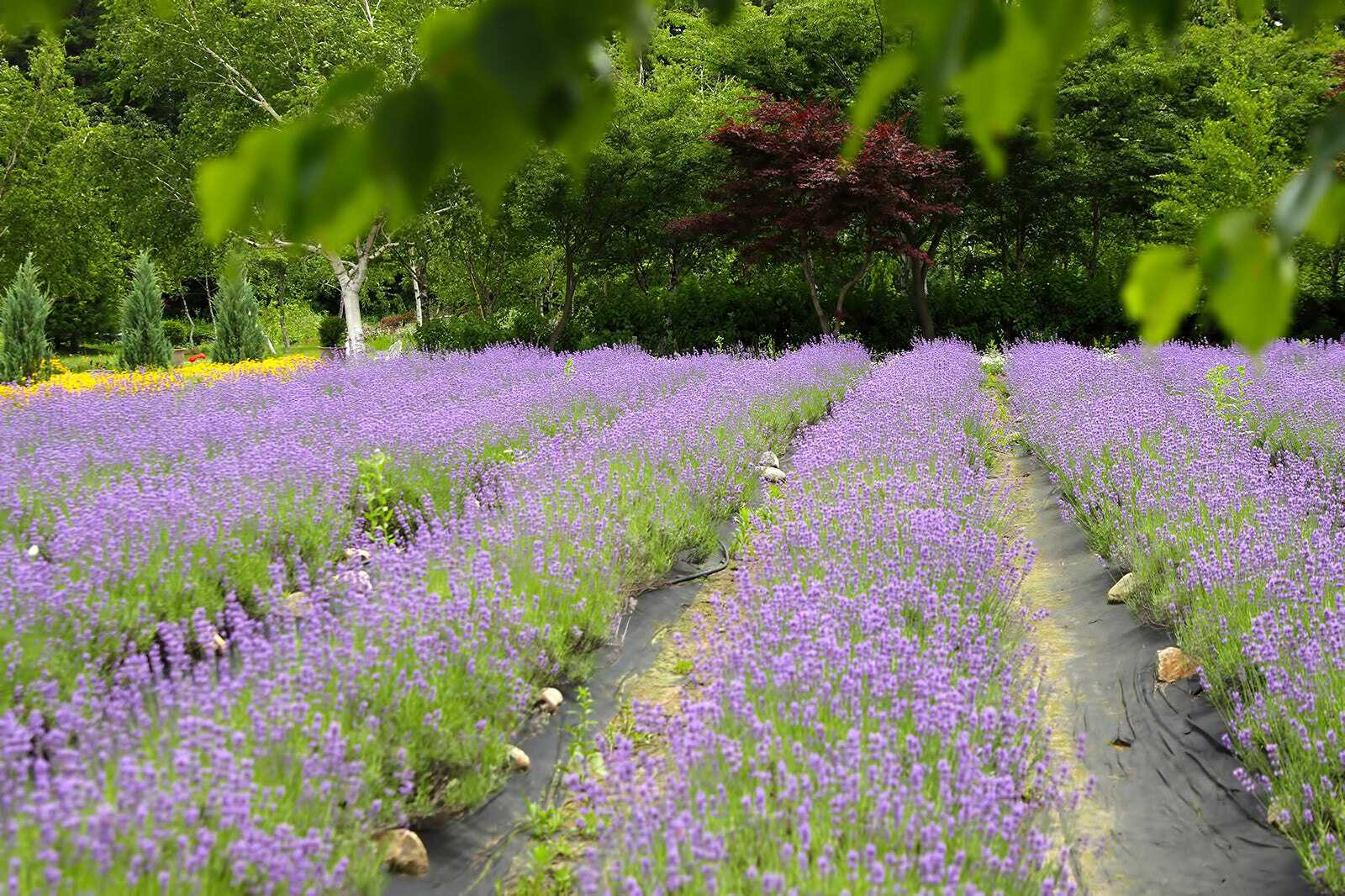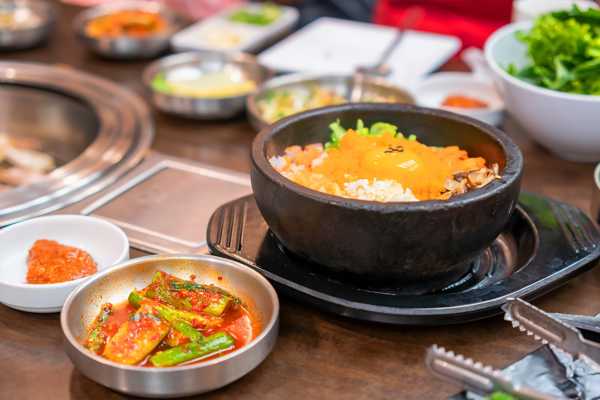The best family things to do in Goseong involve a mix of historical and natural attractions. As the northernmost town in South Korea, Goseong has a fascinating past which has seen it change hands between North and South Korea. It serves as a holiday destination for the country’s most powerful rulers and provides a peek across the North Korean border.
While the historical attractions are a huge draw for this seaside town, families visiting Goseong will also appreciate the Gangwon County’s wealth of natural beauty, from the expansive Hwajinpo Lake to pristine beaches overlooking the East Sea. Read on for fun places to visit in Goseong with your kids.
- 1
Goseong Unification Observatory Tower
Peek over the border into the world’s most secretive state

- Families
- History
- Photo
The Goseong Unification Observatory provides a glimpse into the nation-state of North Korea from a 70-metre-high viewpoint. More than 1.5 million people frequent this attraction every year. Look below the glass deck at the observatory and you will see the 2 nations facing off against each other at the armistice line – a reminder that tensions still linger between the South and North despite a long period of relative peace.
You’re required to register at the Unification Observatory Deck before proceeding by car to the Goseong Unification Observatory. It is worth noting that only private vehicles are allowed on the grounds. With sweeping views of the East Sea and the Geumgang mountain range, along with extensive military exhibits, the Goseong Unification Observatory Tower is a must-visit when in Gangwon Province.
Location: 481 Geumgangsan-ro, Hyeonnae-myeon, Goseong-gun, Gangwon-do, South Korea
Open: Daily from 9 am to 4.30 pm
Phone: +82 (0)33-682-0088
Map - 2
DMZ Museum
A place where the hope of a reunited Korea rings loud

- Families
- History
- Photo
The DMZ Museum houses a variety of equipment from the Korean War, including bayonets, propaganda leaflets and gun cartridges. It is set in the Demilitarized Zone in Goseong, about 900 metres behind the Unification Observatory, close to the Civilian Control Line.
Opened in 2009, the DMZ Museum symbolises the separation caused by the Korean War and the hope for reunification in the future. The environment around the DMZ has not been altered or disrupted for over 60 years. This leads to a thriving wildlife ecosystem, some of which has been recreated in the DMZ Museum.
Location: 369 Tongiljeonmangdae-ro, Hyeonnae-myeon, Goseong-gun, Gangwon-do, South Korea
Open: March–October: Tuesday–Sunday from 9 am to 6 pm (closed on Mondays). November–February: Tuesday–Sunday from 9 am to 5 pm (closed on Mondays)
Phone: +82 (0)33-634-8553
Map - 3
Hwajinpo Lake
Take in sweeping vistas of this natural phenomenon

- Budget
- Couples
- Families
- Photo
Hwajinpo Lake plays a key role in the ecology of the Goseong region. Known as the largest lagoon in South Korea, it's named after the beach roses lining its shores. The unique figure-8 lake is a mix of freshwater and seawater, which creates a diverse ecosystem for aquatic creatures to live together harmoniously.
Hwajinpo Lake is best experienced in summer when the roses are in full bloom and the dense pine trees provide some much-needed shade. It was featured in many South Korean productions, including the drama Autumn in My Heart (2000) and the film Failan (2001).
Location: 596-2 Hwapo-ri, Geojin-eup, Goseong-gun, Gangwon-do, South Korea
Map - 4
Hwajinpo Ecological Museum
Learn about the vast and intricate ecosystem of Hwajinpo Lake

- Families
- History
- Photo
The Hwajinpo Ecological Museum offers an opportunity to learn about the ecosystem of the nearby Hwajinpo Lake and the various species inhabiting the lagoon.
The museum consists of 3 exhibition halls, each showcasing different aspects of the Hwajinpo Lake. From learning about the tectonic movements that caused the lagoon’s formation to observing hundreds of fossils and lifelike models, a visit to the museum is an educational experience that gives you a greater appreciation for the complex geology of the Hwajinpo Lake.
Location: Hwapo-ri, Geojin-eup, Goseong-gun, Gangwon-do, South Korea
Open: Daily from 9 am to 6 pm
Phone: +82 (0)33-681-8311
Map - 5
Songjiho Beach
The crown jewel on Goseong’s immaculate coastline

- Adventure
- Budget
- Couples
- Families
- Photo
Songjiho Beach is a secluded stretch of coastline approximately 2 km long with shallow and tranquil waters. The beach is near Songjiho Lake, with Seoraksan visible to the west and Jukdo Island to the east.
Songjiho Beach is an excellent beach for families, thanks to its calm waters, soft sand, and peaceful atmosphere. Nearby, you can find a convenience store, restrooms, and beach showers. Renebleu by Walkerhill looms in the background. Not many tourists venture out to this beach, but those who do are rewarded with fantastic views and a relaxing spot to cool off during the sweltering summer.
Location: 8 Oho-ri, Jugwang-myeon, Goseong-gun, Gangwon-do, South Korea
Open: Daily from 6 am to midnight
Phone: +82 (0)33-680-3356
Map - 6
Goseong Wanggok Village
Step back in time and experience the Korea of yesteryear

- Families
- History
- Photo
The Goseong Wanggok Village is a 14th-century Korean settlement which, thanks to its sheltered location, has remained in pristine condition for decades. Visitors looking for an authentic cultural experience can spend a night at one of the 50 hanok (wooden lodgings) in this historic community. Some houses are built with tiles and others with thatch, but all of them follow traditional design principles.
The Goseong Wanggok Village can be found near Songji Lake, around 1.5 km from Songjihohaesuyokjang Beach. The Folk Experience Festival takes place every year from July to October, offering plenty of traditional performances, games, and cart rides.
Location: 399 Obong-ri, Jugwang-myeon, Goseong-gun, Gangwon-do, South Korea
Open: Daily from 9 am to 6 pm
Phone: +82 (0)33-631-2120
Map - 7
Ayajin Beach
Serene views and shallow waters make this an ideal holiday spot

- Adventure
- Budget
- Couples
- Families
- Photo
Ayajin Beach has garnered popularity among locals as a secluded yet picturesque beach in Goseong. Onsite facilities include showers, changing rooms and even camping areas. The beach spans 600 metres in length, with shallow waters that are especially clear on sunny summer days.
There are many cafes near the shore if you want to stay dry, though we prefer relaxing under one of the beach’s many colourful gazebos. Thrill-seekers looking for an adrenaline rush can hop on a jet boat or floating raft for a high-speed experience.
Location: 230-1 Ayajin-ri, Toseong-myeon, Goseong-gun, Gangwon-do, South Korea
Open: Daily from 9 am to 5 pm
Map - 8
Geonbongsa Temple
An ancient shrine which has stood the test of time

- Budget
- Couples
- Families
- History
- Photo
Geonbongsa Temple is a Silla-era shrine in Goseong. It stands alongside Sinheungsa, Baekdamsa and Naksansa as one of 4 representative temples in the Seoraksan region. The scenery is especially breathtaking during autumn when the foliage transforms into vivid shades of orange and red.
Geonbongsa Temple was damaged in a major fire in 1878 and even razed to the ground during the Korean War. It has been rebuilt and restored to its former glory, with untouched remnants like Neungpagyo Bridge earning special protection status. The sole surviving pine tree from both the 1878 fire and the Korean War dates back 300 years. The Janggun spring is another must-see at the temple. Legend has it that monks were brought here during the Japanese invasion (1592–1598) to train and bathe in the healing waters.
Location: 723 Geonbongsa-ro, Geojin-eup, Goseong-gun, Gangwon-do, South Korea
Phone: +82 (0)33-682-8100
Map - 9
Hani Lavender Farm
Lavender-related products in a beautiful rural location

- Shoppers
The Hani Lavender Farm is surrounded by fields of soft purple flowers which bloom every spring. It's a great place to shop for anything made with lavender. The shop is filled with soaps, perfume, scented candles, and sachets of dried lavender for your sock drawer.
Take home a box of lavender tea, which is said to help you sleep and improve skin health. Goseong is known for growing gorgeously scented lavender – it even hosts a lavender festival in June. If you’re visiting in summer to try Hani Lavender Farm’s lavender lemonade or lavender-flavoured ice cream.
Location: 175 Kkotdaemaeul-gil, Ganseong-eup, Goseong-gun, Gangwon-do, South Korea
Phone: +82 (0)33-681-0005
Map - 10
Kim Il-sung Villa
A historical treasure trove filled with wartime ornaments
- Families
- History
- Photo
Kim Il-sung Villa is a 3-storey stone-clad castle overlooking Hwajinpo Beach. The story of how the former North Korean dictator’s home came to in the South takes a few twists, starting with the fact that the castle was in fact commissioned by an American missionary in 1938. It was occupied by Kim in 1945 after foreigners were deported by the Japanese government in 1940.
Kim Il-sung spent his holidays in his villa until 1950 when the 38th Parallel as we know it today was drawn up, placing Goseong in the southern half of Korea. Visitors to the Kim Il-sung Villa can find an assortment of mid-century North Korean memorabilia, family photos, and linguistic trivia.
Location: 280 Hwajinpo-gil, Geojin-eup, Goseong-gun, Gangwon-do, South Korea
Open: Daily from 9 am to 6 pm
Phone: +82 (0)33-680-3677
Map



















